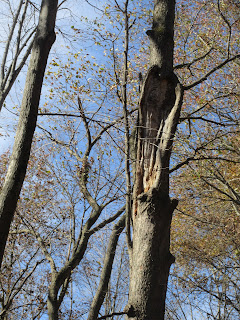Monday, December 12, 2022
Weak Point In A Ruger Single Action?
This may be it. The little round rod you see is the Hammer Plunger. It has a spring behind it in the hammer, and a relieved area on the side so it remains captured by the little pin you see in the hammer. This plunger pushes forward on the backside of the Cylinder Latch when you draw the hammer back, which lowers the front end of the latch, allowing the cylinder to turn. The Plunger is pushed upward into the hammer as the hammer drops, and then it pops back to the limit of the relieved area against the little pin when it is at rest. The plunger broke on a Single Six I had in the mid-1970's, and I saw this repeated on a friend's Single Six a year or two later. It was easy to replace by using a drill bit shank cut to length, and then filing the side where the pin rides.
If this breaks in your revolver you cannot operate the action normally. The cylinder latch is not moved when you try to cock the gun, and it is jammed up as the hand tries to rotate the cylinder. I think you could make the gun work by opening the gate, rotating the cylinder so it is unlatched, closing the gate, and then cocking the hammer. The important thing for you to do if this happens is to turn the gun upside down and catch the bottom of the Hammer Plunger. You will need it when you make your new piece so you can make the length right. I haven't had this problem again for over forty years, but I sure have not forgotten it. A prudent person would probably order a few of these plungers just in case one is needed.
Saturday, December 3, 2022
The Importance Of Branch Angles
"See Good Trees" is my motto when doing improvement work in timber. Look for the good ones and get rid of trees competing with them. For timber growers, a good tree has a straight stem, good natural pruning, a wide healthy crown, and no forks or tight branch angles with included bark. This red maple demonstrates the danger of forks and tight branch angles. Trees like this one tend to be damaged by wind and ice.
Do we need to get rid of this tree now? We can utilize it for firewood, but currently we are covered up in dead ash trees, and those need to be harvested before we go after a live tree. Is it interfering with a good crop tree? If not, just leave it for the time being. Rot is going to work its way down the stem, but there will still be a good log for ten or fifteen years. You can also leave a tree like this to serve as a wildlife tree. That break will work as a good nesting site, and possibly a den.
Here's a bad fork with included bark and rot progressing.
Another bad fork with hidden bark included, but sound on top.
This one is a sound fork with both wood and bark where they should be. A fork is the top end of merchantability for sawtimber. You need a minimum of 8' 6" for a hardwood log to be merchantable. If a tree forks below that it will never go to the sawmill.
This is a good branch angle with the limb going back all the way to the pith. The tighter the branching angle, the more likely bark will be trapped between the limb and the stem.








